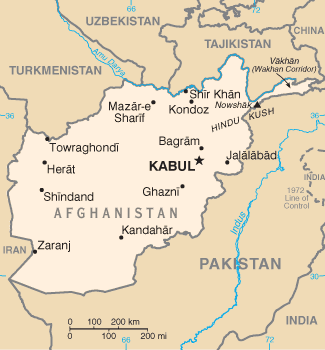Decades ago, short skirts were a common sight in musical programs on Afghan television. But the triumph of Islamic fighters over the Soviets in 1989, followed by the Taliban’s capture of Kabul in 1996, led to severe crackdowns on both women’s dress and on the broadcast of non-religious music.
Afghanistan’s reconstruction in the post-Taliban era has involved some renegotiation of women’s freedom and religious obligations. The broadcast of music videos showing female singers wearing dresses and simple headscarves inspires happiness in some, and scorn from religious conservatives and the courts. The nation’s new constitution stipulates that no law may contravene the “provisions” of Islam, and the court has spoken out on the law as it pertains to women’s dress generally. Recent proclamations include a decision that Afghan women are permitted to work with non-governmental organizations provided they dress to Islamic standards, allowing only their face to show. Other decrees call the airing of music videos with women singers wearing the hijab, as opposed to more conservative dress, a “mistake” that should not be repeated. Meanwhile, views on women’s attire vary widely among Afghans in general, and many ignore the statements of the court, suggesting that this debate will continue for some time.
- Previous: Introduction
- Next: Australia



